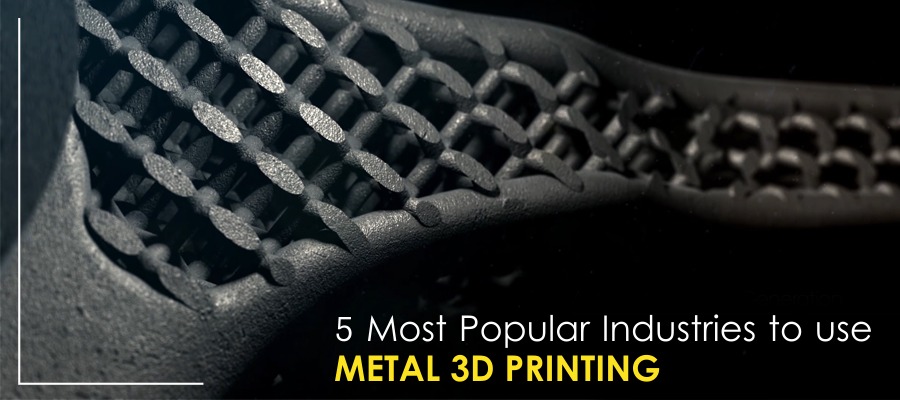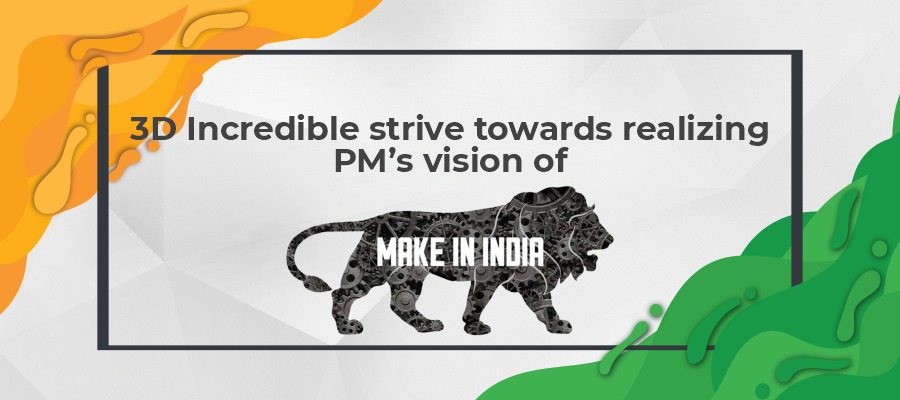The metal 3D printing industry has evolved incredibly in the past few years. It has significantly shifted from the research and development sector to the manufacturing arena. On understanding the right applications, many industries have quit traditional processes like casting, lathing, milling, and injection moulding. The biggest reason behind it is that additive manufacturing has the ability to print complex design that seemed unachievable a few years back.
Advantages of 3D metal printing are that it provides an array of solutions and allows you to use various products having different properties, strength, colours, and melting points. Industries like automotive, medical and aerospace are adopting rapid metal prototyping because it makes the manufacturing process accurate and faster. These custom-made solutions have thus revolutionised many industries.
5 Most Popular Industries to Use Metal 3D Printing in 2019
3D Printing in Automobile Industry
Automotive was one of the first industries to jump towards additive production. Nearly every big name uses 3D printing technology for manufacturing. Jaguar used 3D metal printing for recreating their 1957 classic model – XKSS. Other Automotive giants like Porsche, Ford, Volkswagen Group, Audi, utilise this technology to make many different car parts. Although metal rapid prototyping can’t be used to produce end parts, it is highly employed to build batch production of the cars. The most popular parts are fixtures, spare parts, cradles, tools, brakes, and much more.
It enables the designers to look into the parts and easily customise the parts according to the requirement. The technology has made it feasible to create lattice structures i.e. lightweight pieces that are durable, strong, stiff as well as consistent. Now, restoring classic cars is also possible due to prototyping. The future of automotive is predicted as cars that are manufactured totally using the 3D metal printing technology.
3D Printing in Medical Industry
Metal 3D printing is used to create various body parts like implants, prosthetics, braces, crowns, aligners, dentures, and much more. The technology has allowed some ground-breaking research in the field of tissue engendering. Recently, scientists at the University of Toronto have introduced printing skin tissue. This discovery will now be now used for drug testing, healing burns, and solving other skin related issues.
3D printing enables to create patient-specific- implants (PSI) that completely matches patient’s anatomy. The 3D scanners and printers have made the whole process accurate, predictable, affordable, and faster. The diagnosis and operations have higher success rates since they are well planned and better researched.
3D Printing in Aerospace Industry
Since the aerospace industry faces the most critical situations, precision is the most important virtue to be followed. It can be achieved with the help of 3D metal printing as it allows creating parts that are highly accurate, safe, and well equipped. Parts that are commonly made using 3D metal prototyping are aircraft interior components, tools for composites, combustor liners, UAV parts, engine segments, and oil and fuel tanks segments.
Additive manufacturing helps to make lightweight parts which saves lots of material and thus lowers the production cost. Researchers can now build parts that are flight-worthy, innovative, and can hold up in risky conditions.
3D Printing in Architecture Industry
3D printing makes the early process of model making in architecture really easy and effective. The hand-made models took lot of time, material and effort. With 3D printing, the 3D designs of buildings can be simply printed and with minute details, thus giving actual look and feel of the building to the clients. It also enables architects to make unconventional designs which we not easy with while making models manually.
3D Printing in Tooling Industry
The biggest con of the tooling industry is that its production is very expensive and truly time-consuming. The sector always strives to offer products that are good quality, affordable, and sustainable. Additive manufacturing has the ability to make the tools more efficient, reliable, cheap, and customised as per the demands of end user. Metals are the conventional choice for producing 3D printed tools because of their various properties like hardness, resistance, and much more. The improved performance of the tool also helps to increase the sales and profits.
Conclusion
Understanding the advantages and capacity of 3D printing is the need of the future. Thus, Incredible AM Pvt. Ltd. has introduced Metal 3D printing in India since 2017 and is providing highly customised and unique solutions to its wide range of customers in different sectors. If you are searching for once such solution, then we would be happy to help you!




